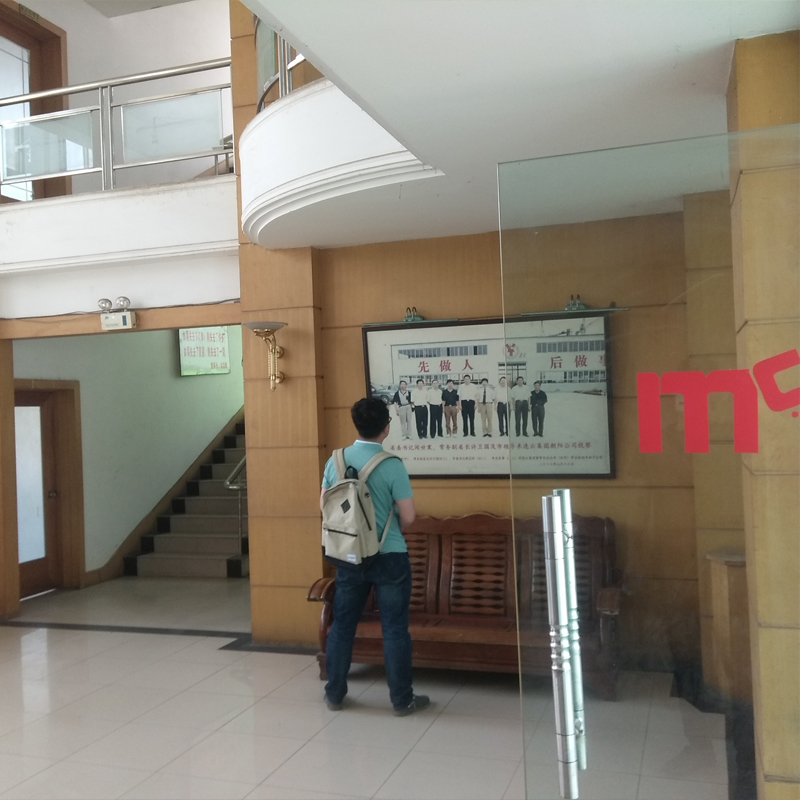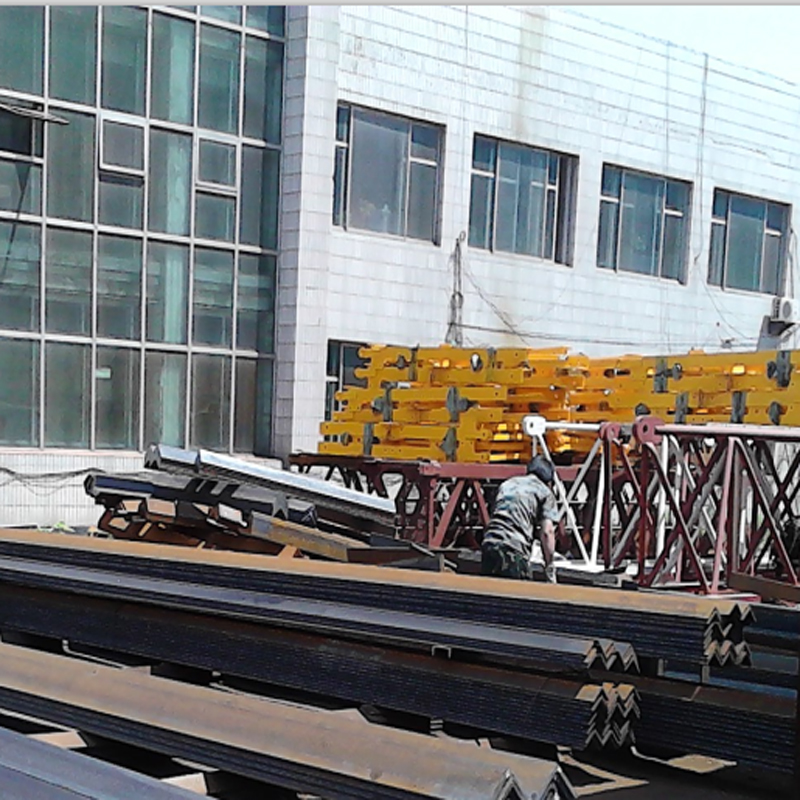·subversion? Car e-commerce can't grab the traditional dealer rice bowl
China will standardize the tangible automobile market to promote standardization construction. China's stock market has risen sharply in 2015. I am keen on investing and I made money in this bull market. On the same day, on the same day, the major e-commerce companies are playing with the middle of the year. "War, the advertisements for selling cars are particularly conspicuous. I also have plans to buy a car, so I clicked in to see."
We mainly produce:
ELECTRIC CONTROL SYSTEM
* Schneider/ABB/Fuji, or other reliable electrics elements are selected.
*Multi-core plugs design and layout inside the electrical cabinet are convenient to maintain when problems occurred.
* Plug-ins controls make the work convenient and fast.
* Inverter with PLC reduce the fault rate, it ensures the stability, high configuration, simply use.
Tower Crane,Secondhand Tower Crane,Sym Tower Crane,Luffer Crane Miliscorp Industry Ltd , https://www.mctowercrane.com
The first time I experienced online car purchase. The next day after I submitted the order, the local dealer customer service called me and asked me to go to the store to test drive at noon the next day. The next day I arrived at the dealership in the suburbs by car. The sales took me around the road at the entrance of the store and explained the advantages of the car in detail. For me personally, this kind of experience is obviously not enough, because I did not get the answer I wanted, such as the passing and comfort of the car in the face of complex road conditions.
Car e-commerce is different from traditional e-commerce. Due to the characteristics of the car itself, the form of car e-commerce will inevitably be different from the traditional e-commerce. Due to the standardization of products and the relatively low price, traditional e-commerce does not involve offline experience, so the closed loop can be completed online. In the automotive industry, the industry chain is very complicated. The products that are sold are products + experience + services, which is what we call O2O can't do, so it is also bound to be different from traditional e-commerce.
At present, there are five kinds of gameplays for car e-commerce: the first is a comprehensive e-commerce platform; the second is an e-commerce platform established by a car vertical website; the third is an e-commerce platform directly built by car companies; It is the e-commerce platform made by the dealer group; the fifth is WeChat, which is characterized by the addition of Internet finance, and has improved the automobile e-commerce sales chain.
Tesla's marketing model is different from other e-commerce companies. It emulates Apple's direct sales model. Because electric vehicles are different from internal combustion engines, their products are required to be explained, sold and maintained. As a niche brand, direct stores can provide more professional services and better brand display. Tesla is more about the experience, different from the traditional 4S shop business model. By developing the online sales side by means of experiencing the store, from the channel access point of view, the sales model and mode are quite different from the traditional automobile 4S shop mode. More importantly, Tesla can better provide consumers with humanistic care through the direct mode, and better pass on their product ideas.
But this is also because Tesla's annual sales are only tens of thousands of cars, and car buyers can wait for the decision, if other popular brands operate in Tesla mode is simply not realistic.
In addition to the traditional distributors, Tesla, the major e-commerce platforms have chosen to cooperate with dealers. The reasons are nothing more than the fact that there are many auto brands, complex types, high unit prices, inconvenient logistics, and large-scale warehousing. These are all provided by dealers with offline resources. Among them, the most important car test drive experience in the car sales process is that e-commerce can never be replaced. Therefore, the topic of e-commerce associations to eliminate the fate of traditional car dealers is not established. On the contrary, car e-commerce must be supported by traditional dealers in order to succeed.
Due to the influence of dealers, the current online shopping in car e-commerce is more like collecting orders, the actual transaction depends on the dealer store. The whole process looks more like collecting intent customer information, and the final purchase is still to go offline, so the general car e-commerce car purchase process is as follows:
Consumers understand product information → pay hundreds of dollars of sincerity deposit online → go to the local dealer to experience the test drive personally → return the car to the satisfaction within 24 hours → Satisfy the dealer to pay the final payment, enjoy the dealer store On-board, insurance, after-sales maintenance, etc., after-sales service is equivalent to buying a car in a physical store. Of course, buyers can also pay the full amount online or apply for installment payments, then go to the store to pick up the car. Either way, pick up and after-sales service can only be done in a physical store.
This kind of car buying mode does not know what to think, and I personally feel very inconvenient. If it is not for the squatting of the third party subsidy on the online car purchase, it is very difficult to impress me to take the initiative to place an order.
Manufacturers test the water "network direct sales" way to sell cars Now some manufacturers have begun to test the water through the "network direct sales" way to sell a certain brand of the brand. Take GAC E-Emei (participation, picture, inquiry) as an example, consumers only need to choose the configuration model they need through their authorized e-commerce platform, and pay the advance payment, then consumers only need to wait for distribution. The merchant will send the vehicle's procedures and the vehicle itself to the location requested by the owner. Of course, the owner can also choose to go to the dealer store to pick up the car. The advantage of this is that the owner does not need to go to the dealer or dealer of the vehicle constantly, choose the vehicle, and does not need to pay the car at the dealer's site, waiting for the invoice, handling the vehicle certificate, etc. The procedures, online sales model, will simplify the purchase of cars as simple and convenient as our daily online shopping.
This kind of direct sales method is actually a win-win situation for dealers. After all, it does not need to take up funds to buy a car, and it reduces the pressure on inventory. Although the profit of dealer sales is indeed a big impact, the manufacturer will provide a certain subsidy for the dealers who assist the delivery of the car for the sales of each car to compensate for the loss of profits. In the face of this kind of online sales model, dealers will shift their profit focus to the after-sales aspect, improve service quality, and truly achieve international standards.
What else can a car e-commerce sell besides a new car?
From the perspective of e-commerce, choose to cooperate with dealers, or have no choice but to help, after all, the new car sells not only products, but also after-sales service. If there is no after-sales car, can the consumer's heart be driven only by the price advantage? The two cakes, parallel imported and used cars, have undoubtedly attracted the attention of major e-commerce companies.
At present, the supply of parallel imported cars is mostly concentrated in Tianjin. However, with the establishment of free trade zones across the country, parallel imported cars will also spread all over the country. What is most interesting to e-commerce is that in 2014, China imported 1.42 million vehicles. This is a very large market.
Parallel imported cars bypassed the sales links of general distributors, regional distributors, 4S stores, etc., eliminating many intermediate links. Parallel import car dealers are not subject to vendor restrictions and are relatively free, so there is a big discount on the price. Usually, parallel imported cars are 20% lower than the price of medium-sized cars, and they can also buy overseas models that are not available in China. As long as the car e-commerce masters the supply, it is not a problem to sell parallel imported cars at a lower price than the dealers. However, the problem is that the sales outlets are not perfect. Most models can only be inspected and shipped from the ports of the free trade zone.
In addition to new car sales, the biggest growth point for car e-commerce is in the used car market. However, the water used in second-hand car trading is very deep. The most significant problem is that sellers tend to sell at high prices, and they will conceal the real car conditions and try to “preserve valueâ€. The buyers are generally afraid that they will be concealed because they are afraid of being defrauded. Real car conditions. Therefore, direct C2C transactions are almost impossible to develop. At present, the main circulation chain of various auto e-commerce companies is C2B-B2B-B2C, but how to collect cars on a large scale and then sell cars by platform can only be achieved by the power of auto e-commerce, and must rely on used car dealers. The strength, but the problems that appear here are the same as the parallel imported cars, which are limited by the radiation radius of the storefront and can only be digested locally, making it difficult to sell cars across regions.
Manufacturers will not abandon the cooperation between traditional dealers and dealers. It is necessary to continue to use the e-commerce platform to sell cars. The Internet as a tool is also a kind of thinking. On the one hand, car e-commerce can not be separated from the support of traditional dealers. Subject to the dealer store, this is a double-edged sword. And manufacturers can not abandon the existing dealer resources to go online to sell cars, after all, dealers use their own assets to help manufacturers bear a large part of the cost. The attributes of the car are also destined to be continuously maintained, maintained, and repaired throughout the life cycle. It cannot be like clothing, home appliances, daily necessities, online orders, and delivery. From the current point of view, the car electricity business can not be the life of the traditional dealers, can only be used as a sales channel for dealers, to assist in the sale of cars.
Luffing cranes: 4t ~ 25t (LT4522-8t, LT5030-10t/12t, LT6027-12t, LT6037-16t, LT6047-25t, etc),
Flat Top: 6t~32t (MT5012-6t, MC6013-6t, MT7020-10t, MT7525-12t/16t, MT8040-20t/24t, etc),
Top Kit : 6t ~ 40t (MC6013-6t, MC7015-10t, MC7033-16t, MC7527-18t, MC8030-20t/25t, MC8075-32t/40t, etc),
Roof Derrick Crane: 4t ~ 16t (LD3020-6t/8t, LD2430-10t, LD4060-12t/16t),
Passenger Hoist: SC200/200,
Parts supply: Mast sections(Potain, Liebherr), fixing angles, mechanisms and motors parts, electrical parts, etc.

